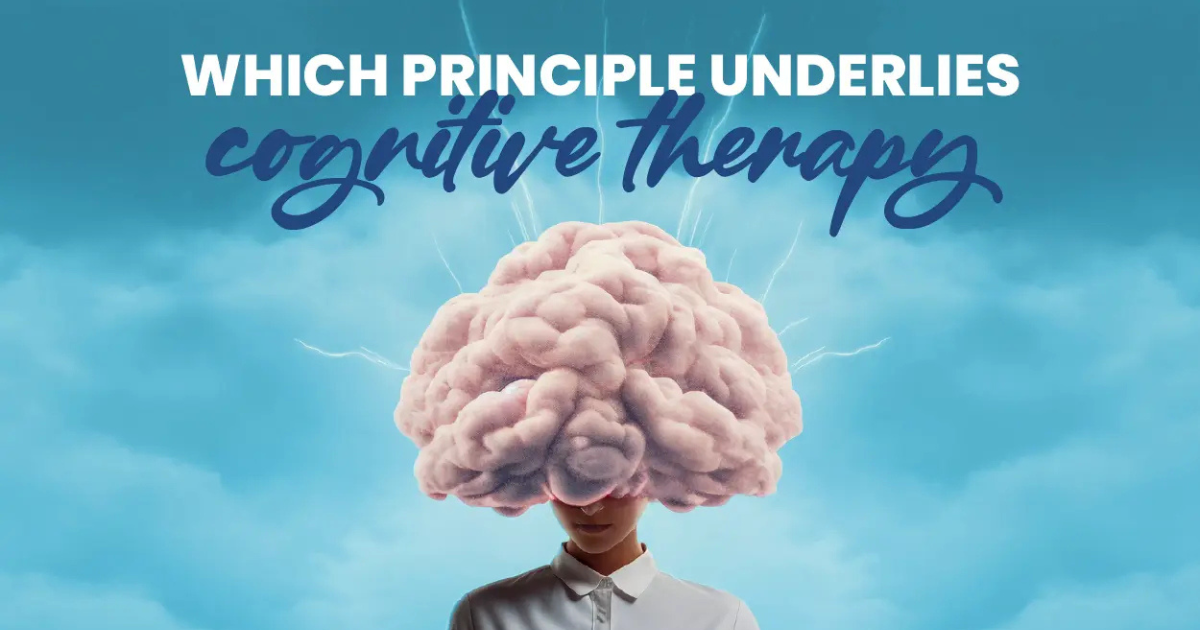Cognitive-Behavioral Therapy (CBT) has gained significant traction in the field of psychology as an effective treatment for various mental health issues, including anxiety disorders, depression, and PTSD. The efficacy of CBT is rooted in several key principles, one of which serves as its foundation: the interplay between thoughts, emotions, and behaviors. Understanding this principle is crucial to grasping how CBT works and why it can lead to transformative changes in an individual’s mental health.
The Cognitive Model
At the heart of CBT is the cognitive model, which posits that our thoughts influence our feelings and behaviors. This model suggests that cognitive distortions—irrational or exaggerated thought patterns—can lead to negative emotions and maladaptive behaviors. For instance, an individual who believes they are unlovable (a cognitive distortion) may experience feelings of sadness and subsequently isolate themselves from others, reinforcing their negative beliefs.
CBT aims to identify and challenge these distorted thoughts. By recognizing the relationship between thoughts, feelings, and behaviors, clients can begin to understand how their cognitive patterns contribute to their mental health challenges. This awareness is the first step toward change.
The Role of Cognitive Restructuring
One of the primary techniques in CBT is cognitive restructuring, which involves modifying negative thought patterns. During therapy, individuals learn to:
- Identify Negative Thoughts: Clients are taught to notice their automatic thoughts and recognize when these thoughts are leading to negative emotions or behaviors.
- Challenge Distortions: The therapist assists clients in questioning the validity of their negative thoughts, exploring evidence for and against these beliefs.
- Replace with Balanced Thoughts: Clients work to develop more realistic and balanced thoughts, which can lead to improved emotional states and healthier behaviors.
This process not only alleviates immediate distress but also equips individuals with tools to manage future challenges independently.
Behavioral Activation
Another principle underlying CBT is behavioral activation, which focuses on changing behavior to influence emotions. This principle is particularly beneficial for individuals experiencing depression. The idea is simple: engaging in positive or meaningful activities can help break the cycle of avoidance and low mood. By gradually increasing involvement in enjoyable activities, clients can experience a boost in their mood and a decrease in depressive symptoms.
The Importance of Homework Assignments
CBT often incorporates homework assignments, which are designed to reinforce skills learned during therapy sessions. These assignments may include journaling, practicing new coping strategies, or engaging in specific behavioral experiments. Homework is crucial for reinforcing the principles learned in therapy and encourages individuals to apply these concepts in their daily lives, promoting greater self-efficacy and resilience.
Collaborative Therapeutic Relationship
The therapeutic relationship in CBT is another essential principle. CBT is typically structured and goal-oriented, requiring collaboration between the therapist and client. This partnership fosters a safe environment where clients can express their thoughts and feelings without judgment. The therapist’s role is to guide, support, and challenge clients as they work through their cognitive and behavioral patterns.
Evidence-Based Approach
CBT is grounded in empirical research, making it an evidence-based practice. Numerous studies have demonstrated its effectiveness for various mental health issues, solidifying its place in psychological treatment. The principles of CBT have been tested and refined over decades, ensuring that the therapy is both scientifically sound and practically applicable.

Leave a Reply